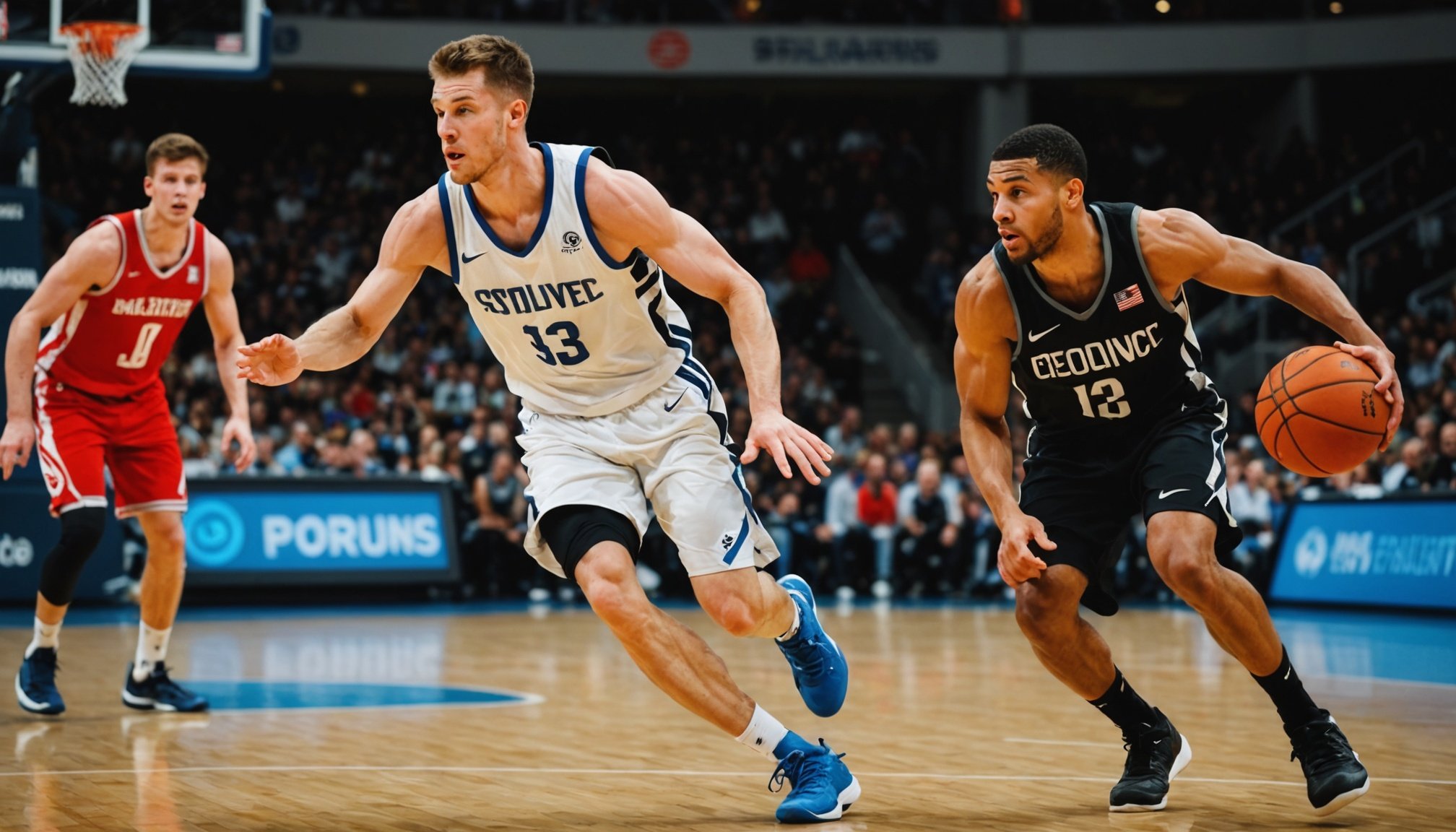Understanding Interval Training for Basketball Performance
Interval training is a powerful tool for enhancing basketball performance, prioritising both endurance enhancement and agility. Unlike steady-state training, where athletes maintain a constant pace, interval training involves alternating between intense bursts of activity and rest periods. This dynamic approach mirrors the sporadic bursts of sprinting and stopping in basketball, making it ideal for preparing athletes for real-game situations.
The benefits of interval training extend beyond basic endurance. Studies indicate it significantly improves cardiovascular fitness, helping athletes recover quicker between plays. For basketball players, this translates into sustained energy throughout the game, enhancing overall performance.
Additional reading : Elevate your game: the ultimate uk basketball players” guide to boosting cardiovascular fitness with interval training
Research shows that interval training is notably effective for basketball athletes. For example, a study demonstrated that players incorporating high-intensity interval training improved their game performance by increasing their maximal oxygen uptake (VO2 max), an indicator of aerobic endurance. This evidence suggests that interval training contributes not just to better endurance, but also to fully optimising basketball performance.
Ultimately, interval training prepares athletes for the unpredictable and high-intensity nature of basketball, offering a superior alternative to traditional endurance methods. Basketball players can strategically leverage these techniques to not only boost stamina but also to refine their agility and reaction time on the court.
Additional reading : Boosting game performance: leveraging technology to empower uk basketball athletes in tracking and improvement
Tailored Interval Training Strategies for UK Basketball Players
For basketball players in the UK, implementing tailored training strategies to optimise endurance in varying weather conditions is essential. UK basketball strategies often incorporate specific interval training protocols designed to suit the regional climate and player’s individual requirements.
Adjusting training sessions by considering factors like rain, cold, or humidity can significantly impact a player’s performance and endurance. Athletic coaches recommend customising session intensity and duration based on the weather and the player’s current fitness level. This might include indoor drills during inclement weather or reduced recovery times during cooler months to simulate game-like conditions.
Player experience is another critical factor in refining these endurance training strategies. For instance, beginner athletes may require longer rest intervals. Conversely, more experienced players can handle high-intensity bursts with shorter recovery periods, enhancing their performance potential on the court.
Overall, successful interval training involves not only generic strategies but ones that are adapted to fit the local environment and each player’s abilities. This approach ensures athletes benefit from maximised endurance enhancement and adaptability in real-game scenarios. As each player improves, the training continues to evolve, reflecting both personal growth and regional challenges.
Step-by-Step Training Plans for Basketball Endurance
Incorporating structured training plans can significantly boost basketball performance improvement. Effective plans include basketball-specific drills that enhance stamina and agility while optimising interval scheduling for peak benefits.
Weekly Interval Training Schedule
A comprehensive weekly schedule forms the backbone of effective interval training. It blends short, intense basketball drills with rest or low-intensity exercises. For instance, you may start with three minutes of high-intensity sprints followed by two minutes of walking or dribbling at a relaxed pace. Importantly, this routine helps replicate the dynamic start-stop nature of a game.
Progression Techniques for Endurance Building
To continuously advance endurance, consider progressive intensity increases. Start with moderate-intensity sessions, gradually intensifying both the drill’s pace and duration. This systematic escalation challenges both the cardiovascular system and muscle groups, steadily building resilience over time.
Incorporating Game Situations into Training
Simulating real-game situations during practice is crucial for realistic performance improvement. By incorporating drills that require decision-making under pressure or mimic defensive plays, athletes can translate skills from training to court situations effectively. These scenarios ensure players are prepared for unexpected moves and rapid transitions, vital for high-stakes games. Such integration bridges the gap between isolated training and game performance, enhancing overall readiness.
Nutrition and Recovery Strategies for Optimal Performance
Ensuring optimal nutrition for athletes is crucial for enhancing basketball performance and endurance. A balanced diet rich in carbohydrates, proteins, and healthy fats supports intense training regimes. Carbohydrates fuel high-intensity efforts, while proteins repair and build muscle tissue, essential for recovery. Healthy fats offer sustained energy.
Hydration is paramount in maximizing training effectiveness. Proper fluid intake prevents dehydration, which can severely impair athletic performance and cognitive function. Players should drink water consistently before, during, and after training sessions. For more demanding sessions, consider incorporating electrolyte-enhanced beverages to replenish lost minerals.
Recovery methods are essential for preventing injuries and boosting performance. Techniques such as adequate sleep, active recovery days, and foam rolling can help athletes maintain peak condition. Sleep is when the body repairs and rebuilds, so aiming for 7-9 hours per night is beneficial.
In addition, structured cooldown routines post-training or games help clear lactic acid buildup, reducing soreness and accelerating recovery. Utilizing a combination of nutritional strategies and recovery interventions ensures players are well-prepared for training’s demands, ultimately enhancing their on-court performance and preventing potential setbacks.
Success Stories and Case Studies in Interval Training
Exploring success stories in interval training underscores its profound impact on basketball training. Notably, renowned athletes like Lebron James have leveraged these methods to enhance their endurance and overall performance, maintaining their edge in a competitive sport. His regimen illustrates how integrating high-intensity drills with recovery intervals can boost both aerobic and anaerobic capabilities, essential for dominating on court.
In local contexts, case studies of UK basketball teams reveal transformative outcomes through tailored interval training. For example, the Manchester Giants implemented specific protocols addressing endurance and agility. Players experienced marked improvements in performance metrics such as game endurance, reflected in fewer substitutions required by coaching staff during critical match periods.
Continuous improvement metrics play a pivotal role in validating training intervention success. Effective tracking focuses on variables like VO2 max and lactic acid thresholds, fundamental in assessing fitness progress amongst athletes. These benchmarks allow teams to capture tangible results, reinforcing the effectiveness of interval training.
This comprehensive approach ensures athletes not only maximise their endurance but also thrive in high-intensity scenarios, ultimately translating into superior performance and agility on the court. Such case studies highlight interval training as a cornerstone in modern basketball conditioning.
Expert Recommendations and Resources for Basketball Training
Understanding the value of expert advice is crucial in enhancing basketball prowess through interval training. Professional coaching provides not only tailored guidance but also motivational support necessary for implementing effective strategies. Local coaches have invaluable insights into the nuances of endurance training, adapting methods to suit specific player needs while considering the competitive landscape.
Incorporating training resources enhances the educational aspect of preparation, offering tools to refine skills and intervals effectively. Books, online courses, and workshops are among the wealth of resources available, each contributing to comprehensive basketball development. Engaging with these can deepen understanding, ensuring that athletes continuously hone their techniques and strategies in line with the latest research and trends.
Local UK facilities dedicated to basketball and endurance training provide tangible avenues for improvement. These institutions often house certified coaches, offering structured programs that incorporate regional intricacies. Engaging with such specialists not only grounds players in scientifically-backed methods but also connects them with a community sharing similar performance enhancement goals.
Through mindful coaching, resource utilization, and fostering regional expertise, athletes can unlock their potential. Empowered with knowledge and support, basketball players refine their skills, translating them into impactful on-court performance.











